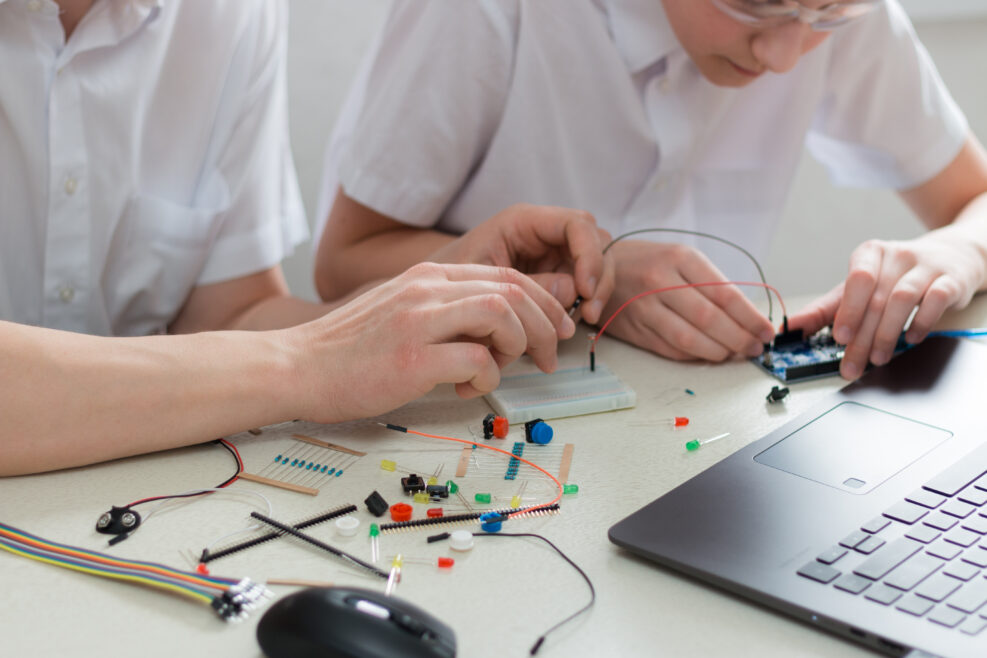
Circuit Patterns, Part 2: Voltage Dividers
Pretty much any time you see two resistors connected in series with a wire coming out from between them, you are witnessing a voltage divider in action.In yesterday’s installment, we talked about the importance of circuit patterns, both for understanding the circuit schematics that you might find on the web and for building your own circuits. This series introduces some of the commonly used circuit patterns that are essential to electronics. The first installment covered the most basic resistor pattern, the current limiting resistor. In this article, we are going to look at another basic resistor pattern the voltage divider. Voltage dividers work because resistors, while they limit current, also eat up excess voltage. An LED, for instance, will tend to only eat up a few volts. The excess voltage left over will quickly lead to an overabundance of current. That is why, to work properly, Read More ›

